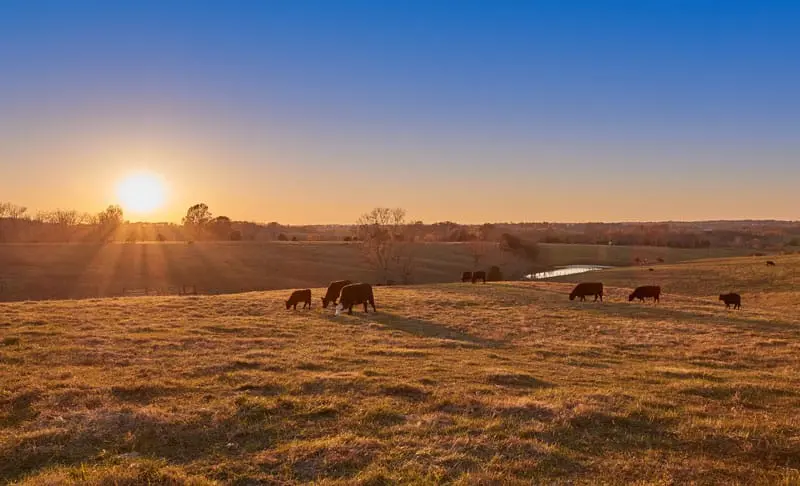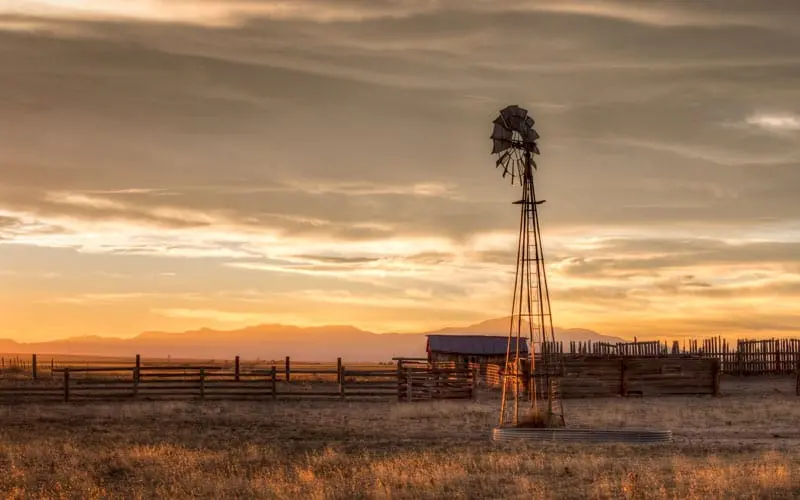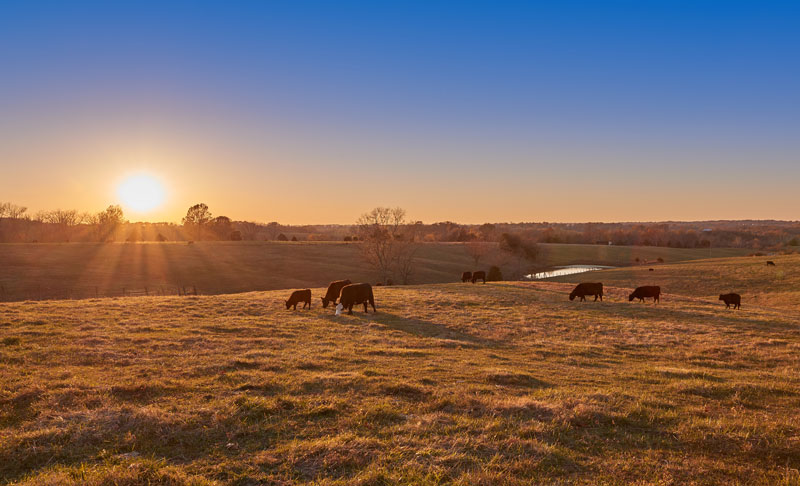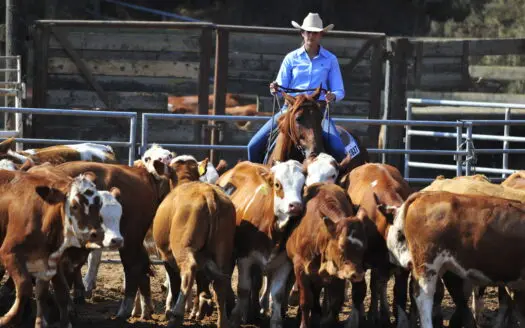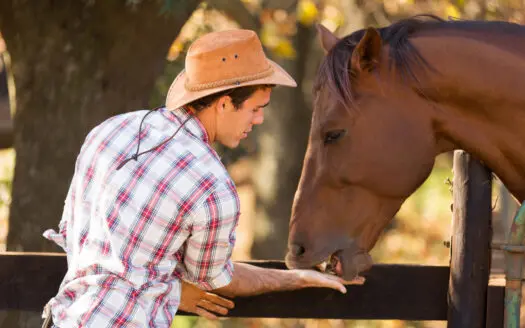Is Owning A Ranch Profitable | United Country Real Estate
Is Ranching Profitable? Anything You Need to Know About the Ranching Business
A ranch has a venerated place in American history. The sight of cattle against the backdrop of a wide-open sky conjures up feelings of freedom and endless possibilities.
For many people, buying a ranch, in particular a cow-calf operation, is an escape from the confines of the city or suburbs — for others, it is the continuation of a family tradition.
Buying a ranch is more than chasing an American ideal. Before you invest your hard-earned money into rural real estate, it is important to make sure that your ranch turns a profit.
Passing down a working ranch with a sizable herd to your children is a gift of a way of life. If you are thinking of buying a ranch, consider whether you are doing it as a hobby or whether you have ambitions of becoming a full-time rancher.
What You Should Know Before You Take Up Ranching
Simply producing more (like heavier weights at weaning) was often not the best goal. You need to see the main factors that affect profit and understand how much they can boost profitability. You also need to think of your ranch businesses as whole systems, where every part is linked and affects the others.
In ranching, you need to manage four main areas:
- production
- money matters
- selling
- people
Each of these affects how much profit we make, and they all affect each other. We need to learn to see this and predict how a change in one area might impact the others. It’s easy to just focus on production and let it guide all our decisions.
There are only three ways to improve profit:
1) increase turnover
2) decrease overheads
3) improve gross margin (total returns minus direct costs).
Earning Revenue by Operating a Ranch
There are advantages to running a ranch as a business. Profitable ranches give their owners the time to enjoy their property and devote their energy to improving and maintaining the property.
Perhaps more importantly, the IRS distinguishes between ranches run for-profit and ranches run as a sideline.
Being able to provide a clear business model that incorporates the costs and revenue potential of a working ranch will go a long way to convincing the federal government that your ranch is a legitimate business.
Understanding the economic principles of ranch operation is crucial. Overhead should be as low as possible, and you should have a practical plan to sell your cattle with a clear estimate of how much you can make per head.
This requires knowing a bit about cows, logistics, economics, and marketing.
The Life Cycle of Cows
Owners of profitable ranches organize ranch operations around the lives of the cattle they sell. Trying to force cattle to grow and breed on your schedule results in unhealthy cattle. Choose a breed of cattle that would thrive on your land and align with your goals Be aware of the natural breeding season of your cows and provide care and resources to help calves grow into healthy cows.
Cows are sensitive to stressors in their environment. Disease, overcrowding, confinement, and inadequate living conditions prevent cows from thriving and cut into the ranch’s revenue.
Ranchers that focus on buying an initial herd without planning ahead for the next generation are not likely to have profitable ranches.
The Business of Selling Cattle
Once you have a healthy herd of cattle, you will need a plan to turn those cattle into revenue.
As your herd grows, and you become more familiar with the local marketplace, you will be able to calculate your expected revenue per head. Managing the herd well will increase your carrying capacity.
For generations, the cattle business has been a significant part of global agriculture, playing an essential role in economies and societies worldwide. Yet, like any business, cattle selling involves numerous intricacies and requires both knowledge and strategic planning.
Understanding the Market
The cattle market is complex and influenced by numerous factors, from feed prices and beef demand to climate conditions and geopolitical events. Keeping abreast of these factors helps sellers anticipate market trends and make informed decisions about when to sell and at what price.
Market reports, agricultural news, and resources from organizations like the USDA are invaluable for this purpose.
Types of Cattle for Sale
Cattle are sold for various purposes, each catering to different market segments. Beef cattle are sold for meat production, while dairy cattle are sold for milk production. Moreover, there’s a market for breeding stock – bulls, cows, and heifers intended for herd improvement or expansion.
Identifying your target market and understanding its needs is crucial for choosing the type of good cattle to sell.
Optimizing Cattle Health and Genetics
The value of cattle largely depends on their health, genetics, and physical characteristics. As such, investing in quality feed, proper veterinary care, and strategic breeding programs can greatly enhance the sale value of your herd.
Sellers who consistently offer healthy, high-performing cattle are likely to build a positive reputation in the market, attracting repeat buyers and premium prices.
Marketing and Selling Strategies
Successful cattle selling involves effective marketing. This can be done through various channels, including livestock auctions, online platforms, direct sales to consumers or meat processors, and on-farm selling events. Each channel has its advantages and challenges. For instance, while auctions can reach a broad audience, direct sales allow for more control over pricing.
Sellers can also differentiate themselves through value-added propositions. This might involve raising grass-fed or organic cattle, for example, which can command higher prices in certain markets.
Regulations and Documentation
Cattle selling is heavily regulated to ensure animal health, food safety, and fair trading. Sellers must comply with various laws and regulations regarding animal identification, disease control, transportation, and record-keeping. Accurate documentation, including health certificates, breeding records, and sale agreements, is key to smooth transactions and legal compliance.
Risk Management
Like any agricultural enterprise, cattle selling comes with risks – from fluctuating market prices to disease outbreaks and extreme weather events. Sellers can manage these risks through various strategies, such as insurance, futures contracts, diversification (raising different types of cattle or supplementing with other farming activities), and maintaining a cash reserve.
The business of selling cattle is as challenging as it is rewarding. It requires a deep understanding of the cattle market, careful planning, and continuous learning.
But with the right approach and strategies, sellers can build a successful and sustainable cattle selling business that contributes to global agriculture and food production while also providing a viable livelihood.
Other Money-Making Opportunities for Ranch Profitability
If you don’t have enough grazing land to support a large herd or the market, there are other ways to supplement the revenue of your ranch.
If your ranch property has a lake, a view of the mountains, or other scenic attractions, allowing tourists to visit your property could bring in extra money.
You might also raise or board horses. Consider a combined farm and ranch property if your land can support more than grass.
Don’t limit yourself to local sources of income. Your ranch could be the cornerstone of a profitable brand if you sell products online to suburban or urban audiences.
Costs and Expenses of Operating a Ranch
Operating a ranch can be a rewarding venture, offering a life close to nature and a tangible return on hard work. However, it also entails considerable costs and expenses. Understanding these financial aspects is crucial to effectively manage a ranch and ensure its profitability.
Land Acquisition and Property Maintenance
The initial cost of purchasing ranch land can be significant, depending largely on the size of the property and its location. However, the expenses don’t stop at the purchase price.
Property taxes, insurance, and ongoing maintenance such as fence repairs, road upkeep, building maintenance, and land improvement projects all contribute to the cost of maintaining the property.
Livestock Expenses
Livestock costs are a primary expense in ranching. This includes the initial purchase of cattle or other livestock, as well as ongoing costs such as breeding expenses, veterinary care, and livestock insurance.
A considerable part of the livestock expense is livestock feed, which can vary significantly based on the type of feed used, the size of the herd, and the availability of grazing land.
Equipment and Machinery
Ranching requires various types of equipment and machinery, including tractors, balers, trailers, and more. The cost of this equipment can be substantial, particularly if purchasing new. Additionally, there are ongoing costs associated with equipment maintenance, repairs, fuel, and eventual replacement.
Labor Costs
Running a ranch is labor-intensive, and while some tasks can be handled by the ranch owners, additional labor is often needed. This could include full-time ranch hands, seasonal workers during busy periods, or specialized services such as veterinarians or livestock nutritionists.
Payroll expenses, health insurance, and worker’s compensation insurance all add to the labor costs.
Utilities and Operational Costs
Ranches also incur regular operational costs such as electricity, water, heating fuel, and waste management. Depending on the ranch’s size and operations, these costs can add up quickly.
Regulatory Compliance
Compliance with local, state, and federal regulations is another cost to consider. This could include expenses related to environmental regulations, animal welfare standards, occupational safety requirements, and more.
Ensuring compliance might require professional consultation, implementation of specific practices or infrastructure, or payment of certain fees or taxes.
Marketing and Sales
Whether selling livestock, produce, or offering agri-tourism experiences, marketing is a necessary expense for most ranches.
Don’t confine yourself to traditional media. Promote your ranch on social media. Start a ranching blog or podcast. Craft your brand image to appeal to wider audiences and find ways to meet their needs. Remember that ranching is an iconic part of American culture and history. People all around the world want a connection to that American ideal.
This can involve website maintenance, social media marketing, attendance at trade shows or farmers markets, or even the costs associated with participating in livestock auctions. You can sell many ranches being put up online such as in real estate websites.
Unexpected Costs
Finally, it’s crucial to set aside funds for unexpected expenses. These could arise from natural disasters, unexpected drops in market prices, disease outbreaks among livestock, or significant equipment breakdowns.
The costs of operating a ranch can be extensive and varied. It requires a careful financial plan, constant monitoring of expenses, and an adaptive management strategy.
However, with a clear understanding of the costs involved, effective cost management strategies, and a passion for the ranching lifestyle, running a successful and profitable ranch is an attainable goal.
Supporting a Thriving Herd for Good Cattle
Be sure that your herd size is in line with what you can support. If you do not have the resources to make the herd work for you, rethink your business model. Modern analytics and informed decision-making are essential for profitable ranches.
Profitable ranches tailor their staffing and ranch management, including veterinary services and feeding, to the needs of the herd. The metrics are more than the number of cows or the number of acres.
Grazing and Feeding
Try to avoid the additional expense of feeding cattle. The most efficient way to raise healthy cattle is to allow them to graze naturally.
If you’re running a ranch and not a factory farm, you don’t want to have to spend your money on the infrastructure needed to feed your cattle daily and deal with problems caused by overcrowding.
Well-managed and profitable ranches increase herd size by promoting the growth of heifers (young cows) that produce the next generation of calves.
Marketing
A ranch won’t make any money if nobody knows about it. Profitable ranches have an established reputation and a brand that buyers can trust. Naturally, it will take time to grow a good reputation, so getting the word out is vital.
Don’t confine yourself to traditional media. Promote your ranch on social media. Start a ranching blog or podcast.
Craft your brand image to appeal to wider audiences and find ways to meet their needs. Remember that ranching is an iconic part of American culture and history. People all around the world want a connection to that American ideal.
Qualities of a Profitable Ranch Property
If you’ve decided to start a ranch, finding a property that is consistent with the needs of your business will provide a sound foundation. Profitable ranches have:
- Sufficient flat land for grazing
- Easy access for transport of cattle, feed, and other necessities
- Facilities for housing and storing supplies, unless you have budgeted for new construction
- Proximity to markets, veterinarians, and other support
Finding Ranch Property
Even in a seller’s market, bargains are waiting for you, especially if you have the freedom to buy anywhere in the United States. Some states sell ranches at a fraction of the price per acre of other states.
Just because a seller markets a property as a ranch does not mean that it is a good foundation for a profitable business.
United Country Real Estate has been matching buyers with profitable properties for nearly a century. We know which properties have the potential to be profitable ranches.
Let our network of over 4,000 agents work for you. Call us for prime ranching real estate across the U.S.

